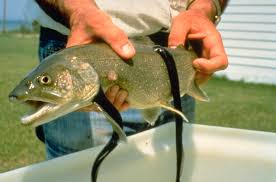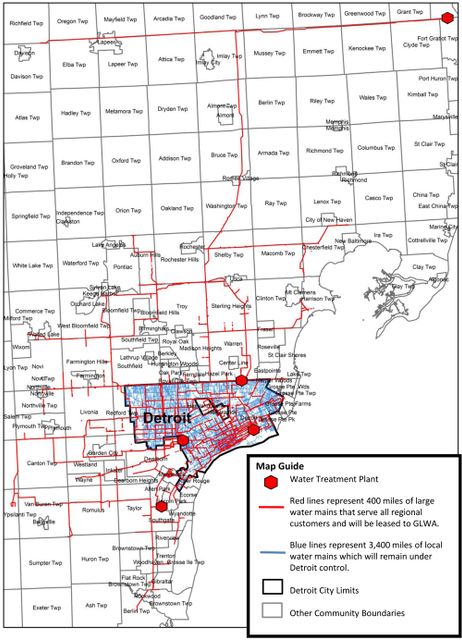Scientists are exploring the possibility that gene drives can be used to annihilate invasive species.
How far would you be willing to go to eradicate invasive species like sea lamprey, Asian carp or alien mussels?
 |
| Sea Lampreys on Lake Trout - Wikipedia |
Entering the Great Lakes through canals built in the 19th century, the sea lamprey had become abundant in the upper lakes by the 1930s and ‘40s. Lampreys are blood suckers, attaching themselves to native fish species, draining and killing them. In Lake Superior, lake trout and whitefish had been abundant and supported an important commercial fishery, but were nearly wiped out by sea lamprey. Efforts to control sea lamprey have had limited success, but are expensive to maintain.
Various invasive species of Asian carp have made their way up the Mississippi River system to within a few miles of the Great Lakes. Some species are voracious filter feeders, consuming great quantities of the plankton on which many native species in the food web depend.
“In some areas of the Mississippi River basin where these fish have steadily taken over, they now comprise up to 97% of fish biomass. Today, commercial fishers in the Illinois River regularly catch more than 25,000 pounds of Asian carp each day, an alarmingly large amount of fish.”
Zebra and the more dominant quagga mussels arrived in the Great Lakes through the St. Lawrence Seaway in ballast water discharged by ocean-going ships. They have spread throughout most of the Mississippi watershed and much of western North America. Their reproduction rate is prolific, creating dense populations. The alien mussels filter plankton and refuse at the bottom of the water column, altering lake ecology, out-competing and suffocating native clams and mussels, which are disappearing rapidly. Zebras are thought to be vectors for botulism, which has been killing thousands upon thousands of birds that feed on the mussels.
*****
A gene drive is the cellular apparatus that assures inheritance of a genetic trait. Scientists are exploring the possibility that gene drives can be used to annihilate invasive species. But the risks of such a capability are sobering. Species could be extinguished worldwide. The potential of such technology in warfare is even scarier.
Hard to say where this science is going, but it’s not going away.
***** ***** *****
Meeting Notice
Meeting announcement by Erika Jensen ejensen@glc.org
The 59th Annual Conference on Great Lakes Research will be held June 6 - 10, 2016 at the University of Guelph in Guelph, Ontario. Forty six sessions have been proposed to encompass the theme Great Lakes Solutions: Integrating Across Disciplines & Scales.
All abstracts must be submitted online by January 29, 2016. The deadline will not be extended.
Questions?
Contact conference program chair Paul Sibley, University of Guelph, (519) 824-4120 ext. 52707 or at 16programchair@iaglr.org
